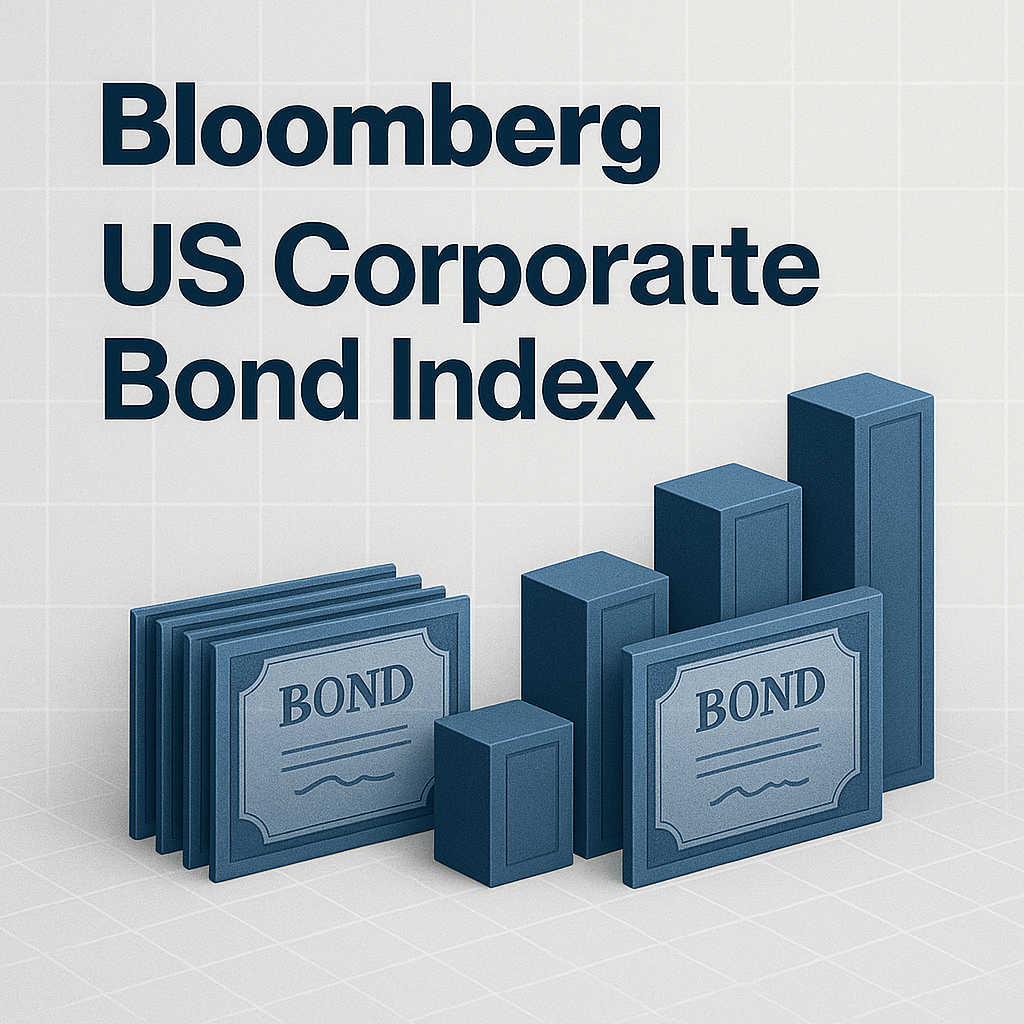Bloomberg US Corporate Bond Index explained in depth—showing how this investment‑grade benchmark tracks nearly every dollar‑denominated corporate bond issued by blue‑chip firms, why its trillion‑dollar scale makes it the go‑to yard‑stick for fixed‑income managers, and what 2025’s spread and duration shifts say about credit markets.

1. What Is It?
Launched in 1973 (as the Lehman Brothers Corporate Index), the Bloomberg US Corporate Bond Index captures investment‑grade (IG) debt from industrials, utilities and financials. As of April 2025 it covers ~8 600 issues from 1 200+ issuers with a face value above US $7 trillion, making it the deepest IG proxy in the world.
2. Inclusion Rules in Brief
| Criterion | Threshold |
|---|---|
| Currency | USD‑denominated only |
| Rating | Baa3/BBB‑ or higher by Moody’s/S&P/Fitch |
| Maturity at Issuance | ≥ 1 year; index exits when < 1 year remains |
| Size | ≥ US $300 million face (taxable issuers) |
| Structure | Bullets, callables, make‑whole calls; no convertibles or floaters |
These filters ensure liquidity and comparability across issues.
3. How Weighting Works
The index is market‑value‑weighted, so mega‑issuers such as Apple, JPMorgan, and Verizon occupy outsized positions. Sector caps do not apply; consequently, financials and communications together top 50 % of weight. Duration sits near 7.2 years and the option‑adjusted spread (OAS) hovers around 128 bp in April 2025, up 12 bp year‑to‑date.
4. Recent Performance Snapshot
| Year | Total Return | OAS Change |
|---|---|---|
| 2022 | ‑15.8 % (rate shock) | +61 bp |
| 2023 | +6.7 % (rate stabilisation) | ‑27 bp |
| 2024 | +4.1 % | ‑14 bp |
| YTD‑2025 | ‑1.3 % | +12 bp |
Higher Treasury yields offset tighter spreads, leaving price returns modest despite solid fundamentals.
5. Why Investors Use It
- Benchmarking IG Portfolios. Nearly every active core or core‑plus bond fund cites this index.
- Asset Allocation. CIOs plug index duration and spread data into risk‑parity and fixed‑income ladder models.
- Passive Exposure. Large ETFs mirror the index, offering low‑fee IG beta in a single trade.
6. Strengths & Limitations
| Strengths | Limitations |
|---|---|
| Broadest IG coverage, updated monthly | Market‑value weighting overexposes largest issuers |
| Deep price history back to 1970s | USD‑only scope misses global IG bonds |
| Daily OAS, duration and sector stats inform risk models | Long duration makes returns sensitive to rate spikes |
7. How It Compares
Whereas the ICE BofA US Corporate Index uses a US $250 m size cutoff and similar ratings, Bloomberg’s methodology excludes 144A private placements, slightly trimming weight. Meanwhile, the Bloomberg US Aggregate wraps corporates inside a broader basket of Treasuries and MBS, diluting credit beta vs. this pure‑play IG benchmark.
8. Looking Ahead
With refinancing walls looming in 2026–27, average coupon cost for index constituents is set to climb from 3.1 % to 4 %+. However, resilient earnings and still‑wide interest‑coverage ratios suggest default risk remains muted. Duration could shorten if companies tilt to 5‑year maturities amid rate uncertainty.
Key Takeaways
- Bloomberg US Corporate Bond Index explained: a market‑value‑weighted, USD, investment‑grade benchmark of ~8 600 bonds.
- Spreads near 130 bp and duration ~7 years frame today’s risk‑reward.
- Investors use it for benchmarking, passive beta, and asset‑allocation inputs—yet must monitor rate sensitivity and issuer concentration.